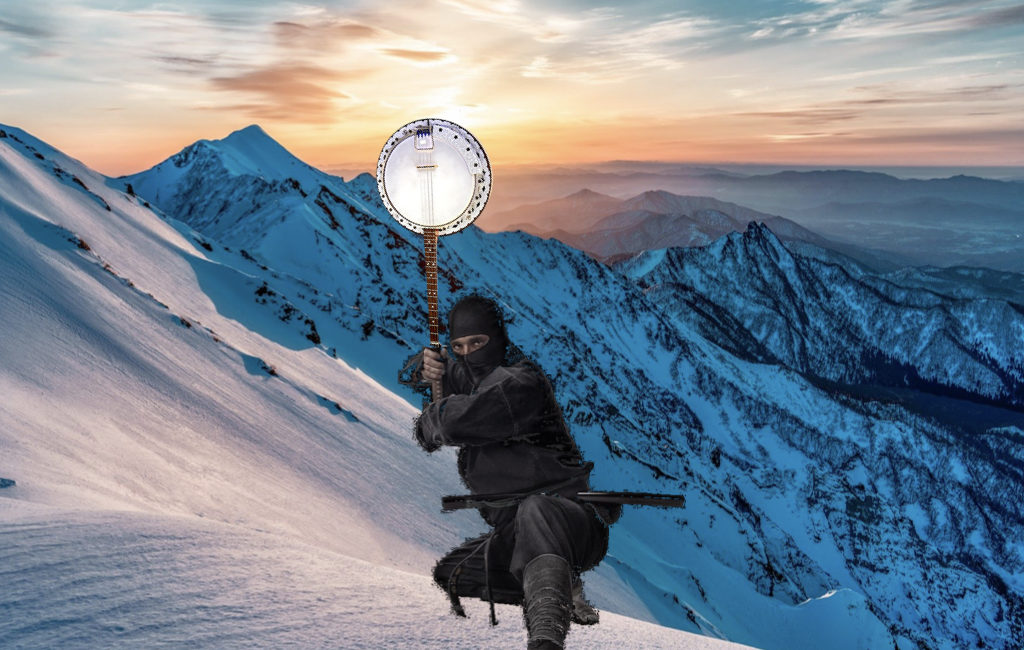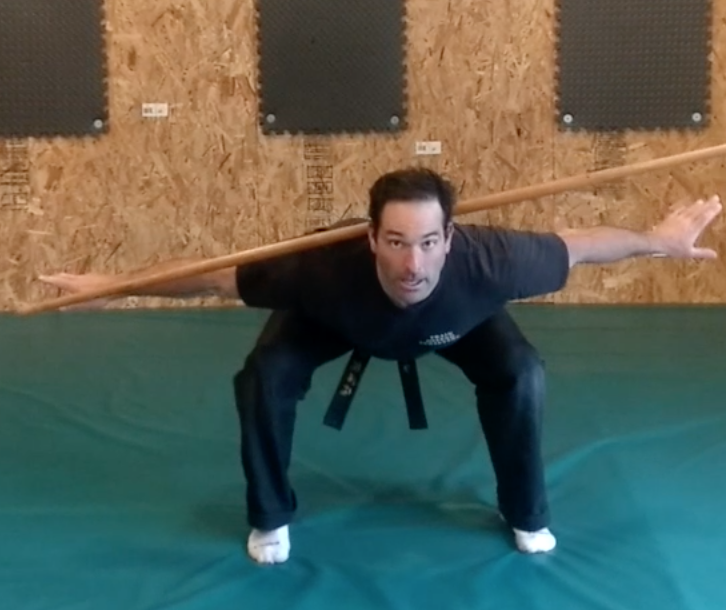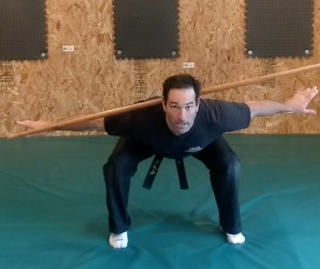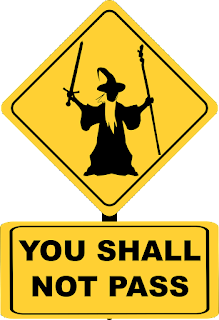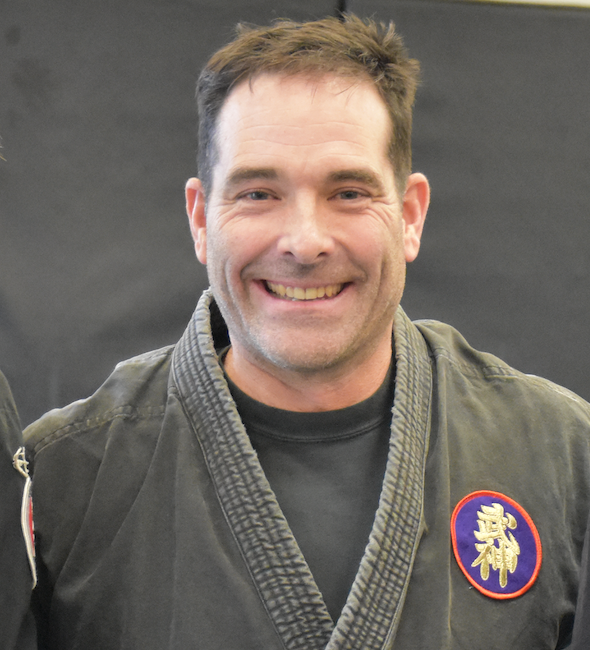Ok, I know what you are thinking.
This is a promotion for a new ultimate sleeping pillow made specifically for ninjas right? You can buy a ninja blender, so why not a ninja pillow. I'm sure it's already been thought of. But I'm avoiding the urge to google it right now.
This is a different kind of pillow. This pillow comes with an added serving of instinctual training, a helping of bird language, and a pinch of baseline in this recipe.
Oh, and it is free and always available.
What?
Today we have a bird language story plus a fun instinctual training exercise by Sensei Roemke. And, we will relate everything to this mysterious aforementioned pillow.
 I want to share a short story that just happened to me on my back porch as I was watching the sunrise, drinking my morning mate, and tuning into the language of the birds.
I want to share a short story that just happened to me on my back porch as I was watching the sunrise, drinking my morning mate, and tuning into the language of the birds.
What's bird language? If you didn't catch the recent blog by Jon Young, who literally wrote the book on bird language, I highly recommend that you check it out. He talks about why ninjas should listen to the birds.
Back to my porch.
It's spring here, and the bird activity is off the charts, especially at dawn. The dawn chorus, when the birds wake up and begin singing in full force, is starting well before 6 am here. This morning I grabbed my morning brew and went to my favorite chair on my back porch to tune my ears into the bird language.
My first thought...I need to recalibrate baseline.
What is baseline?
The natural world has its own daily and seasonal rhythms. To know baseline means that you tune your awareness into this pattern of the symphony of nature that happens all around you. The animals have patterns of activity, much like you and I. Naturalist Dan Gardoqui spoke about how he uses baseline to get close to animals for photography or hunting in a recent post.
At my previous home in California, I had some neighbors whom you could set your watch by. As I sat on my front porch at dawn to listen to the birds, the baker at the local donut shop would walk by. A couple minutes later, a local jogger in a funny 1980's sweat suit would run by heading east. He wore those old-school giant headphones with the antennas sticking out of them. Loved watching that guy. Always made me smile.
Think of the animals similarly. Okay, maybe not with the headphones. The red squirrels in my yard have their morning feeding routines and routes. The same is true with the birds.
There is a baseline to the daily sounds of the birds that is like the score to a musical song. There are crescendos of sound, times of quiet, and then more peaks throughout the day. For example, at sunrise during the dawn chorus, there is a peak of singing, as if the birds are claiming once again...
"I'm alive! The owl did not eat me! Hey! This is my territory!"
After this, the singing typically will settle down as the birds remember..."I'm hungry!" and start putting less energy into singing, and more into feeding. After a full belly, there may be times of rest and quiet (sound familiar?), and then more occasional song to maintain territory. Then at the end of the day there is often a lot of nervous singing and posturing as birds announce territory one more time before scrambling to find a perch to roost upon.
The key to bird language is to recognize baseline, which is a state of activity when the birds aren't having their lives threatened. Then, notice the deviations from this normal relaxed state. These deviations often appear as alarm calls from the birds.
Here's a simple visual of what baseline with the birds can look like.

But...here's the catch. Baseline for the birds shifts seasonally, and even daily if things like storms approach. Once birds are sitting on eggs, the adult singing diminishes.
Why?
Because there are a LOT of nest predators out there looking for tasty snacks. The birds need to go into stealth mode. Things get even more paranoid with the adults once a bunch of loud-mouthed, uncoordinated, hungry nestlings hatch and then fledge the nest. It's like ringing the dinner bell for the hawks.
For most species of birds, fewer than 50% of of the birds that hatch make it to adulthood. Think about what that means in terms of bird awareness of predators.
So...back to my porch.
I was settling in, hot cup of brew in my hand. The thought in my head was ..."I wonder what baseline looks like this morning?"
But then, unexpectedly things took a left turn into the instinctual zone.
Pillow of silence!
I hadn't even had a chance to start mentally mapping all the cardinal and chickadee vocal locations when this thought popped into my head.
One of the things I've learned over the years from both tracking and martial arts instructors who teach instinctual training is this- "trust your gut" or to trust your first impression. Otherwise, the mind jumps in and starts to mess things up by analyzing and confusing things.
So what is a pillow of silence? This is a concept I learned from Jon Young. Basically silence is an alarm.
Imagine you are at a crowded music concert (remember those?). Everyone is dancing and singing. Then suddenly the music stops. Everyone stops dancing, gets quiet and stares in one direction. It would most likely freak you out and make you really nervous. You would be in a pillow of silence.
The same thing happens in the bird world. The cause of this is often a bird of prey such as a Cooper's hawk. These hawks are designed to survive by feeding on other birds. And they are sneaky and quiet. Imagine an assassin that lurked outside your home every day, with big daggers on the end of their limbs, waiting to pounce on you. Welcome to the world of the little chickadee.

As I shifted my awareness to three dimensional listening- in front, behind, right, left, above, and below me where I sat on my porch, I noticed a few things.
The chickadees were singing their morning "cheeseburger" territorial song, but they were farther away than usual, as if a big bubble had pushed them away all around me.
 I noticed too on the ground in the yard below our porch, there were no birds feeding. During baseline, birds are relaxed. Feeding on the ground casually is an example of birds behaving in baseline. Usually our yard would have sparrows, juncos, robins, and cardinals hopping about on the ground searching for breakfast.
I noticed too on the ground in the yard below our porch, there were no birds feeding. During baseline, birds are relaxed. Feeding on the ground casually is an example of birds behaving in baseline. Usually our yard would have sparrows, juncos, robins, and cardinals hopping about on the ground searching for breakfast.
Hmm. I thought. I wonder if there is a Cooper's hawk around?
No sooner had I thought this, when I noticed the flapping of wings in the top of the white pine on the north side of our yard. A moment later a Coopers Hawk flew out and headed to some trees on the south side of our yard. As it did this robins erupted in what is known as a "bullet" flight as they flew away from the hawk, and a blue jay flew to a "sentinel" perch in the top of a nearby pine to watch, both alarm behaviors.
Within just a couple minutes of the hawk's departure, a downy woodpecker began its territorial drumming from the pine next to our yard where the hawk had emerged. Then, the chickadees all moved closer to the periphery of our yard and resumed their "cheeseburger" songs.
The quiet buffer zone I witnessed is known as a pillow of silence. Typically, everywhere a Cooper's hawk flies, it creates these zones of silence and stillness in the birds around it.
 But then my yard became quiet again. This time, however, it had a different feel to it.
But then my yard became quiet again. This time, however, it had a different feel to it.
A robin landed in the yard and started hunting, as did a cardinal. Feeding time. A bluebird flew by and landed on the top of our birdhouse that we recently built to poke its head in the nest box hole. This was a return to baseline.
Learning bird language is one of the best ways to train your "spidey" senses. At first you don't have to know the names of the birds, or who is making the song, though eventually it will help. If you listen deeply you can feel the level of intensity in their songs or alarms.
When you hear a bird, ask yourself...how does that sound feel? Is it nervous, relaxed, contacting it's mate? This is the first step to understanding bird language.
In the Bujinkan, there is a well known test that is given to those going for their 5th degree black belt, or Godan. In this test a Dai Shihan or the Grandmaster Hatsumi Sensei will stand behind the kneeling ninja student while holding a training sword above their head. The student must sense the exact moment when the sword is coming down toward their head in order to roll out of the way.
At Pathways Dojo, we occasionally practice other methods for training our instinctual awareness. Check out the Energy Sensing video below by Dai Shihan Mark Roemke. This is a fun activity that we do in the dojo to heighten our sensitivity.
Next time you head outside, see if you can sense baseline and the alarms. The pillow is free. It's always been around you. It just takes practice to learn to recognize it. Who knows, it might even help you detect that sword behind you one day.


 Over thirty years ago, one of Jon's first students was a young guy named Dan Gardoqui. Today Dan is one of the preeminent trackers, naturalists, and mentors of nature connection in North America. He co-founded and was Executive Director for the White Pines Program in Maine. He lives in Maine today where he runs
Over thirty years ago, one of Jon's first students was a young guy named Dan Gardoqui. Today Dan is one of the preeminent trackers, naturalists, and mentors of nature connection in North America. He co-founded and was Executive Director for the White Pines Program in Maine. He lives in Maine today where he runs  goal is to get closer to a moose in the fall, I am going to go to a place on the landscape where I am most likely to find them. So I have to understand what moose are eating, what they are thinking, what they are doing biologically that time of year which is their rut. Or after their rut when they are done breeding, I need to know if they are likely to be alone, or in pairs, or in bachelor groups. If they are in their thicker winter fur and it's a warmer day, they are going to be seeking out cooler and moister areas, so I'm going to have to think about microhabitats. I'm going to have to think about the cool pockets on the landscape. Ecological awareness flows with the rhythms of nature and is about understanding the natural history of animals and how habitats are preferential or not to different animals.
goal is to get closer to a moose in the fall, I am going to go to a place on the landscape where I am most likely to find them. So I have to understand what moose are eating, what they are thinking, what they are doing biologically that time of year which is their rut. Or after their rut when they are done breeding, I need to know if they are likely to be alone, or in pairs, or in bachelor groups. If they are in their thicker winter fur and it's a warmer day, they are going to be seeking out cooler and moister areas, so I'm going to have to think about microhabitats. I'm going to have to think about the cool pockets on the landscape. Ecological awareness flows with the rhythms of nature and is about understanding the natural history of animals and how habitats are preferential or not to different animals. Dan: This one is fun. "Helper" is a bit biased. It implies that the animals have the intention of being helpful to humans, and they may actually. I'm not sure we can say they definitely do or definitely don't. Some of the most well known examples are of ravens. There are many stories about these birds and how they sometimes act as guides to help people or other animals find certain things on a landscape, such as carcasses or prey species. If you pay attention to some basics of how ravens communicate, and if you are open to the fact that you are in communication with them, because frankly we all are in communication with the animals in one way or another whether we are conscious of it or not, then they can truly help you with some of your goals. The flip side of this relationship is that the ravens also get a benefit. For instance, if you are a hunter, and the ravens are helping you find your prey, after you successfully get that animal, you may leave parts of that animal behind after you process it. Then, the ravens will benefit from this food. There are other examples of this such as the honey guides in Africa.
Dan: This one is fun. "Helper" is a bit biased. It implies that the animals have the intention of being helpful to humans, and they may actually. I'm not sure we can say they definitely do or definitely don't. Some of the most well known examples are of ravens. There are many stories about these birds and how they sometimes act as guides to help people or other animals find certain things on a landscape, such as carcasses or prey species. If you pay attention to some basics of how ravens communicate, and if you are open to the fact that you are in communication with them, because frankly we all are in communication with the animals in one way or another whether we are conscious of it or not, then they can truly help you with some of your goals. The flip side of this relationship is that the ravens also get a benefit. For instance, if you are a hunter, and the ravens are helping you find your prey, after you successfully get that animal, you may leave parts of that animal behind after you process it. Then, the ravens will benefit from this food. There are other examples of this such as the honey guides in Africa. to humans as well. Knowing our human behaviors and patterns is really helpful and wise when we want to stay safe and alert. But, also start to pay attention to everything else. It can be pigeons, crows, rats, squirrels, little sparrows. Start to give your attention to things that are not human and be open to a fact that they are speaking a language that we can understand. Just start being curious, ask questions, and develop relationships with them. The more you spend time in the same place, quietly listening and observing and being open, chances are those individuals are going to get used to you being there. When you give them your attention and respect, they are probably going to do the same for you. Start by just listening, watching, and giving them space. Say you are walking down a sidewalk, and there's a pigeon in front of you feeding on the sidewalk, just slow down and go around it. If you start to give birds a little more space and respect, it changes the dynamics, and it changes the way you see the world.
to humans as well. Knowing our human behaviors and patterns is really helpful and wise when we want to stay safe and alert. But, also start to pay attention to everything else. It can be pigeons, crows, rats, squirrels, little sparrows. Start to give your attention to things that are not human and be open to a fact that they are speaking a language that we can understand. Just start being curious, ask questions, and develop relationships with them. The more you spend time in the same place, quietly listening and observing and being open, chances are those individuals are going to get used to you being there. When you give them your attention and respect, they are probably going to do the same for you. Start by just listening, watching, and giving them space. Say you are walking down a sidewalk, and there's a pigeon in front of you feeding on the sidewalk, just slow down and go around it. If you start to give birds a little more space and respect, it changes the dynamics, and it changes the way you see the world. Dan: This is what I was just talking about. Doing the quiet sits and giving birds your attention and respect for example. Doing this just helps us get out of our own little bubble of thoughts, emotions, and things that might cause disturbance around us. If you think of yourself as moving through a pond, when the mind is quiet, the ripples you cause and the way you move is much smoother, so there are many less ripples or disturbances. When the mind is busy, we tend to cause quite a wake, ahead and behind us. This tends to push things away from us. Many species are very sensitive to our thoughts and emotions, and where we are in our heads, including our own species. It's easy to tell if your family or friends are in a tough space or not. So it's silly to think that wildlife can't detect this as well. Whatever helps you to get to this calm mental space, be it yoga, breathing exercises, or meditation, it's going to help you be more "invisible" in the forest. But it's not really being invisible to me because that means we are trying to hide from something. To me it's more about having integrity with the vibe of a forest or nature. It's not thinking that our human existence is the most important thing. It's just being open to all the other things that exist around us.
Dan: This is what I was just talking about. Doing the quiet sits and giving birds your attention and respect for example. Doing this just helps us get out of our own little bubble of thoughts, emotions, and things that might cause disturbance around us. If you think of yourself as moving through a pond, when the mind is quiet, the ripples you cause and the way you move is much smoother, so there are many less ripples or disturbances. When the mind is busy, we tend to cause quite a wake, ahead and behind us. This tends to push things away from us. Many species are very sensitive to our thoughts and emotions, and where we are in our heads, including our own species. It's easy to tell if your family or friends are in a tough space or not. So it's silly to think that wildlife can't detect this as well. Whatever helps you to get to this calm mental space, be it yoga, breathing exercises, or meditation, it's going to help you be more "invisible" in the forest. But it's not really being invisible to me because that means we are trying to hide from something. To me it's more about having integrity with the vibe of a forest or nature. It's not thinking that our human existence is the most important thing. It's just being open to all the other things that exist around us. places before you decide the techniques you are going to use to blend in with that place. For instance, the pace that you would move in a busy city street in rush hour in order to blend in better be pretty quick. Whereas the pace you are going to use in a quieter rural wild area will probably be a bit slower. So getting to know the baseline of a place and how to blend in with that baseline and how to be invisible, that's part of the stealth and camouflage. So you really need to know a place. Camouflage is not just about colors and patterns. It's about our energy and speed, our body movements, and where we put our eyes. There's all sorts of little tricks in there.
places before you decide the techniques you are going to use to blend in with that place. For instance, the pace that you would move in a busy city street in rush hour in order to blend in better be pretty quick. Whereas the pace you are going to use in a quieter rural wild area will probably be a bit slower. So getting to know the baseline of a place and how to blend in with that baseline and how to be invisible, that's part of the stealth and camouflage. So you really need to know a place. Camouflage is not just about colors and patterns. It's about our energy and speed, our body movements, and where we put our eyes. There's all sorts of little tricks in there.
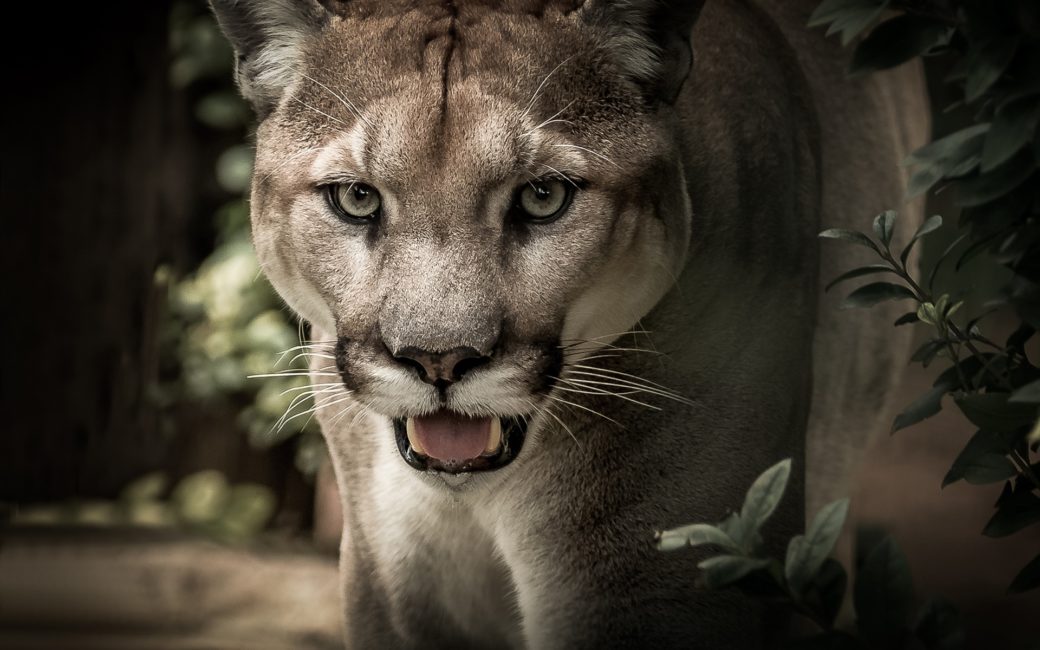
 To take a deeper dive into the art of bird language, we recently connected with Jon, a renowned author, tracker, naturalist, and mentor. Jon is a guiding force in bringing the practice of deep nature connection to the planet and is a pioneering voice in teaching the ancient art of bird language through his workshops and book,
To take a deeper dive into the art of bird language, we recently connected with Jon, a renowned author, tracker, naturalist, and mentor. Jon is a guiding force in bringing the practice of deep nature connection to the planet and is a pioneering voice in teaching the ancient art of bird language through his workshops and book,  JY: An example of bird language happened here on the evening of March 16. As the sun was going down. There were some deer feeding in the yard peacefully. There were three adult male deer and two yearling males. The yearlings were being yearlings. They were playing with each other. They were going off a little bit too far from from their uncles who would coax them back to the herd. The five bucks were feeding peacefully out in the meadow. At one point, a young male wandered off into the forest, on the east side of the field. Then on the west side of the field, where there is a forest edge, something changed. Out of that forest edge came the alarm call of the spotted towhee slowly moving from south to north following something unseen on the ground.
JY: An example of bird language happened here on the evening of March 16. As the sun was going down. There were some deer feeding in the yard peacefully. There were three adult male deer and two yearling males. The yearlings were being yearlings. They were playing with each other. They were going off a little bit too far from from their uncles who would coax them back to the herd. The five bucks were feeding peacefully out in the meadow. At one point, a young male wandered off into the forest, on the east side of the field. Then on the west side of the field, where there is a forest edge, something changed. Out of that forest edge came the alarm call of the spotted towhee slowly moving from south to north following something unseen on the ground.
 JY: Bird language really helps our brains. Also it opens up our awareness of the three dimensional space and has deep neurological benefits that brings us to the quiet mind. In the quiet mind, we’re able to hold silence and not be stressed out by the anxious thoughts that run through our head. Awareness of bird language allows us to be present in the moment. Of course, it allows us to see a lot more when we are moving around.
JY: Bird language really helps our brains. Also it opens up our awareness of the three dimensional space and has deep neurological benefits that brings us to the quiet mind. In the quiet mind, we’re able to hold silence and not be stressed out by the anxious thoughts that run through our head. Awareness of bird language allows us to be present in the moment. Of course, it allows us to see a lot more when we are moving around.


 on patrol in nature as a job occupation. Another thing we have in common is that we both eventually had our minds blown by the language of birds.
on patrol in nature as a job occupation. Another thing we have in common is that we both eventually had our minds blown by the language of birds.
 and hearing to try and detect the enemy when on patrol. My martial arts awareness training complimented this military training. Through years of martial arts training, I learned how to heighten my awareness.
and hearing to try and detect the enemy when on patrol. My martial arts awareness training complimented this military training. Through years of martial arts training, I learned how to heighten my awareness. He took me to a trail in the nearby redwood hills near where I live in Santa Cruz. A few miles into our morning hike we stopped. He turned to me and said, “Let's just stand here for a minute and tune in.”
He took me to a trail in the nearby redwood hills near where I live in Santa Cruz. A few miles into our morning hike we stopped. He turned to me and said, “Let's just stand here for a minute and tune in.”

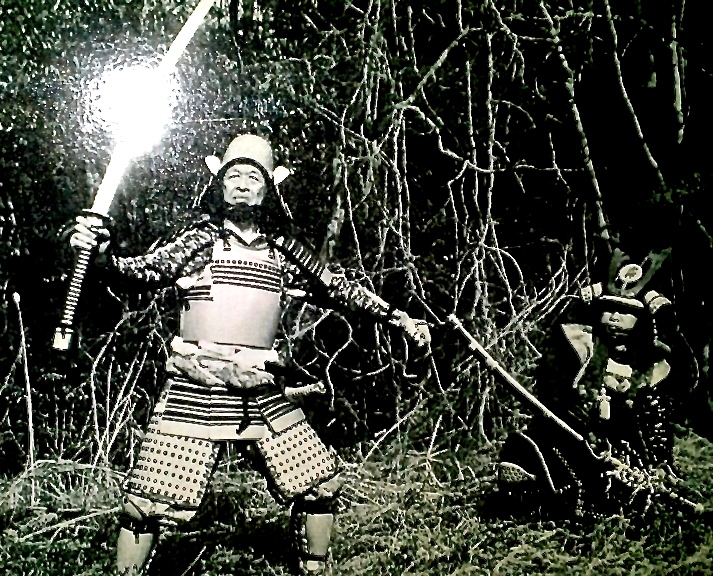




 a rafting trip down the Grand Canyon. One day of the trip, we went for a five mile hike up into the desert canyon. The temperature was over 110 degrees F. The dry desert landscape showed little sign of fresh water. That changed as we rounded a bend in the trail that put us at the base of a 500 foot high red wall limestone rock face. Hundreds of feet above us an enormous spring roared out of the rock wall face from a cave, landing in a large pool at the bottom of the cliff. It was the only time in my life that I have ever swam and drank the water at the same time. I can still hear the roar of the water fall. The dramatic contrast with the parched landscape surrounding this spring highlighted the value of this amazing resource.
a rafting trip down the Grand Canyon. One day of the trip, we went for a five mile hike up into the desert canyon. The temperature was over 110 degrees F. The dry desert landscape showed little sign of fresh water. That changed as we rounded a bend in the trail that put us at the base of a 500 foot high red wall limestone rock face. Hundreds of feet above us an enormous spring roared out of the rock wall face from a cave, landing in a large pool at the bottom of the cliff. It was the only time in my life that I have ever swam and drank the water at the same time. I can still hear the roar of the water fall. The dramatic contrast with the parched landscape surrounding this spring highlighted the value of this amazing resource.

 There is a recent book that details this that I highly recommend by
There is a recent book that details this that I highly recommend by 

